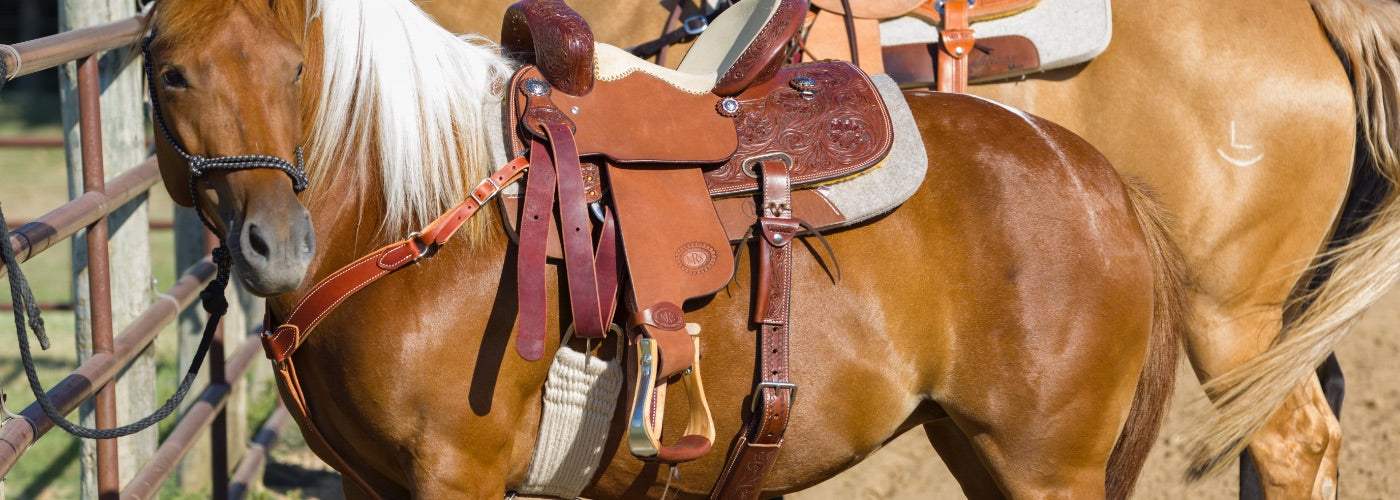
How To Cinch A Saddle: A Guide to the Best Western Cinches
Saddle cinches are some of the most important pieces of tack. Without them, the saddle will slip or fall completely off. It's critical to know how to cinch a saddle so it fits properly and is comfortable for your horse. The best Western cinches keep the rider in the saddle, prevent an irritable horse and protect against painful chafing and sores. A good cinch can make the difference between a great ride and limping home after a fall. Read more to make sure that when you climb into the saddle you are ready to ride.
What Size Cinch Do I Need?
Western cinch sizing typically comes in 2-inch increments, ranging between 26 and 34 inches long. It's extremely important to use the correct size cinch: if it is too short, your horse can get abrasions. If it's too long, it will hold the saddle in place, but there will be excess material under your leg.
For correct Western cinch sizing, place a blanket and an unrigged saddle on the horse. Using a soft tape measure or piece of twine, run the tape under the horse's girth area and measure between the D rings on the front of the saddle. Subtract 16 from the measurement to get the proper size because when you attach the cinch to the saddle, there should be about eight inches between the cinch buckle and the saddle D ring on each side.
You can check to make sure that the cinch is the right size by letting it hang down from the saddle. The cinch buckle should be level with the center of the horse's cannon bone.

Types of Cinches
When learning how to cinch a Western saddle, it's crucial to understand the different materials available, each with its own benefits and drawbacks. The type you choose depends on the type of riding you'll be doing and how much time you want to spend cleaning.
Mohair Horse Cinch
Mohair is the traditional material for saddle cinches. These cinches are constructed of wool strings so they are breathable and dry quickly, and they rarely cause sores. This type of cinch can be a bit more difficult to clean than some other options.
Neoprene Horse Cinch
Neoprene is extremely easy to clean, it won't slip, it absorbs shock and it doesn't harbor bacteria. Most neoprene cinches are smooth, but you can also choose a textured neoprene horse cinch. Burrs and seeds won't stick to neoprene cinches. Horses are less likely to get sores from a neoprene horse cinch, but sensitive horses can get scalded from a build-up of heat. In addition, neoprene cinches don't give and can be over-tightened.
Fleece Horse Cinch
Fleece is the softest type of cinch, but it is very difficult to keep clean because it attracts burrs and seeds. Fleece cinches tend to slip more than other materials, so they need to be tightened more. It has a tendency to clump and mat if not washed and dried properly.
How to Cinch a Saddle
It's really common to wonder how to cinch a horse. But follow these easy steps and you'll know how to cinch a saddle in no time!
The cinch should be tight enough so that the saddle doesn't slip sideways, but not tight enough to pinch the horse. Tighten the cinch gradually in small increments to prevent your horse from becoming girthy and being aggressive while tacking up.
- Position the saddle slightly forward of where it will rest.
- Place the stirrup over the top of the saddle.
- Insert the cinch strap into the D ring on the cinch and pull the cinch strap up.
- Bring the strap down and through the ring on the saddle, back to the ring on the cinch.
- Repeat looping between the two rings until the excess strap is used.
- Buckle the cinch or tie a knot.
- Make sure there are no twists in the straps and tighten the cinch. It should lay flat on the horse to prevent pinching — you should be able to fit your fingers between the horse's girth and the cinch.

Get The Best Western Cinches at NRS
Now that you know about Western cinch sizing and how to cinch a saddle, browse our extensive collection of quality horse cinches. From the best non-slip Western cinch options to textured neoprene horse cinches and more, saddle up today with NRS.
Shop Western Cinches Today




